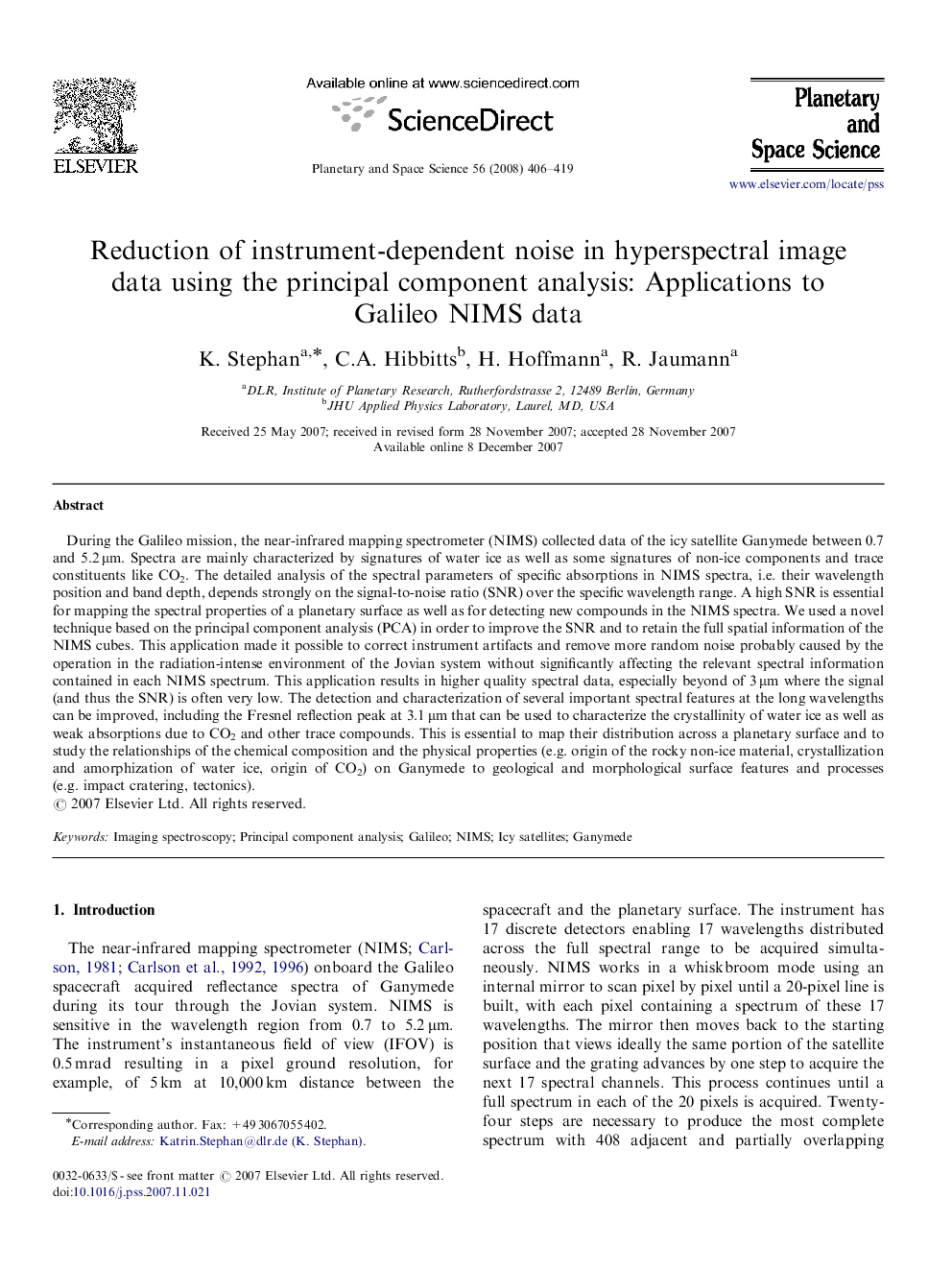| کد مقاله | کد نشریه | سال انتشار | مقاله انگلیسی | نسخه تمام متن |
|---|---|---|---|---|
| 1782342 | 1523972 | 2008 | 14 صفحه PDF | دانلود رایگان |

During the Galileo mission, the near-infrared mapping spectrometer (NIMS) collected data of the icy satellite Ganymede between 0.7 and 5.2 μm. Spectra are mainly characterized by signatures of water ice as well as some signatures of non-ice components and trace constituents like CO2. The detailed analysis of the spectral parameters of specific absorptions in NIMS spectra, i.e. their wavelength position and band depth, depends strongly on the signal-to-noise ratio (SNR) over the specific wavelength range. A high SNR is essential for mapping the spectral properties of a planetary surface as well as for detecting new compounds in the NIMS spectra. We used a novel technique based on the principal component analysis (PCA) in order to improve the SNR and to retain the full spatial information of the NIMS cubes. This application made it possible to correct instrument artifacts and remove more random noise probably caused by the operation in the radiation-intense environment of the Jovian system without significantly affecting the relevant spectral information contained in each NIMS spectrum. This application results in higher quality spectral data, especially beyond of 3 μm where the signal (and thus the SNR) is often very low. The detection and characterization of several important spectral features at the long wavelengths can be improved, including the Fresnel reflection peak at 3.1 μm that can be used to characterize the crystallinity of water ice as well as weak absorptions due to CO2 and other trace compounds. This is essential to map their distribution across a planetary surface and to study the relationships of the chemical composition and the physical properties (e.g. origin of the rocky non-ice material, crystallization and amorphization of water ice, origin of CO2) on Ganymede to geological and morphological surface features and processes (e.g. impact cratering, tectonics).
Journal: Planetary and Space Science - Volume 56, Issues 3–4, March 2008, Pages 406–419